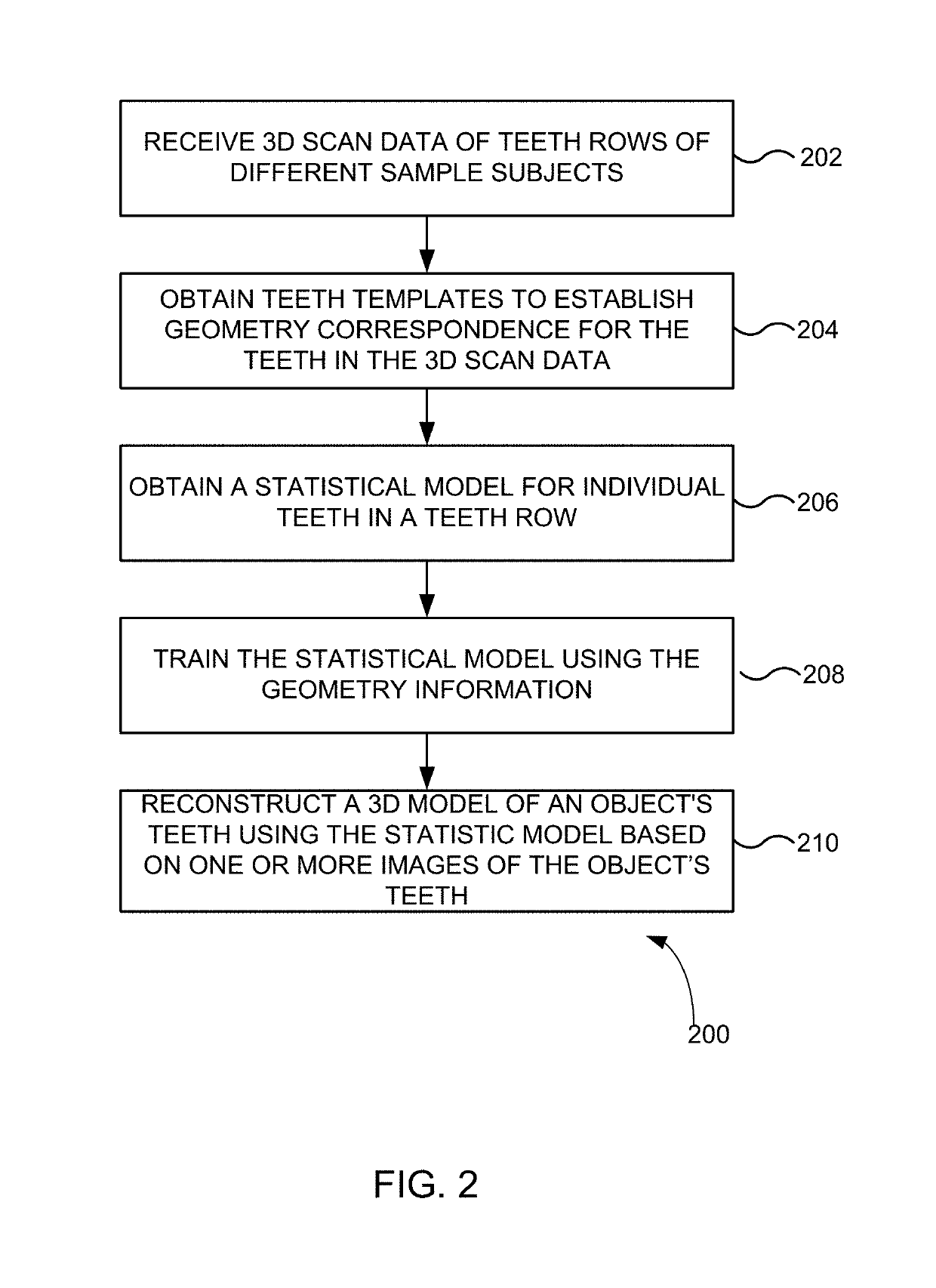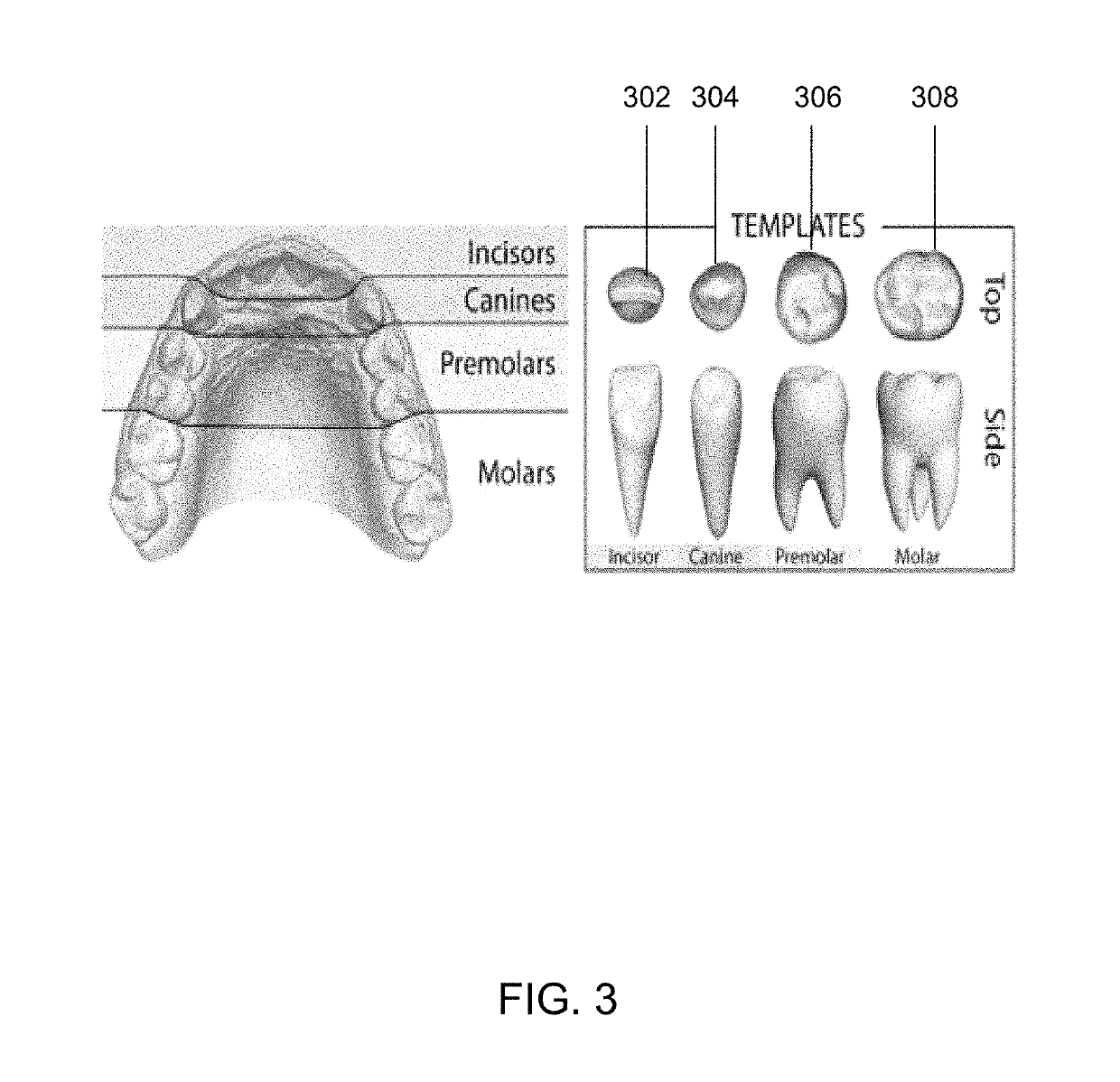Model-based teeth reconstruction
a model-based, teeth-based technology, applied in the field of model-based teeth reconstruction, can solve the problems of inability to easily obtain, expensive devices, and inability to capture teeth,
- Summary
- Abstract
- Description
- Claims
- Application Information
AI Technical Summary
Benefits of technology
Problems solved by technology
Method used
Image
Examples
Embodiment Construction
[0020]Embodiments are directed to reconstructing a 3D model of teeth using one or more images of a mouth region of an object (e.g., an animal) or a person (e.g., an actor or a patient) corresponding to the 3D model. In some examples in accordance with the disclosure, a realistic 3D teeth model can be reconstructed using as few as a single image of the mouth region of the object or the person. For achieving this, in accordance with the disclosure, a teeth statistic model can be defined and developed. The teeth statistic model can represent shape and pose variation of individual teeth in a teeth row. The teeth statistic model can be used to fit 3D teeth templates to the 3D model by estimating parameters from the one or more images of the mouth region of the object or person corresponding to the 3D model.
[0021]One key insight provided by the present disclosure is generalizing tooth shapes for the object or the person using the teeth statistical model. In accordance with the disclosure,...
PUM
 Login to View More
Login to View More Abstract
Description
Claims
Application Information
 Login to View More
Login to View More - R&D
- Intellectual Property
- Life Sciences
- Materials
- Tech Scout
- Unparalleled Data Quality
- Higher Quality Content
- 60% Fewer Hallucinations
Browse by: Latest US Patents, China's latest patents, Technical Efficacy Thesaurus, Application Domain, Technology Topic, Popular Technical Reports.
© 2025 PatSnap. All rights reserved.Legal|Privacy policy|Modern Slavery Act Transparency Statement|Sitemap|About US| Contact US: help@patsnap.com



